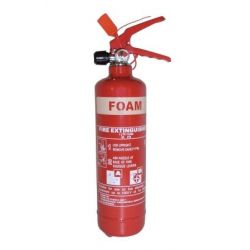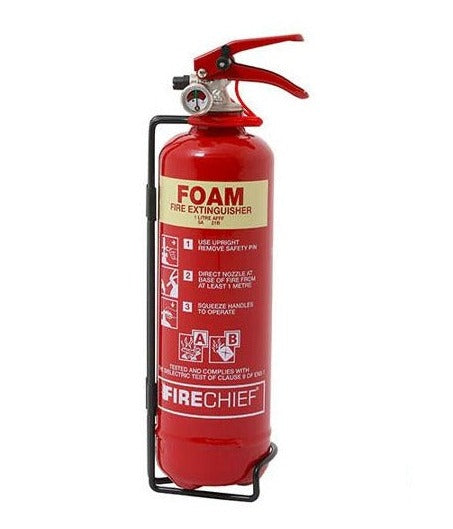Foam fire extinguishers, or more correctly AFFF extinguishers offer some key advantages over the better known water equivalents. AFFF is short for Aqueous Film Forming Foam and, although it contains water as a primary element, when applied to a Class A fire involving combustible solids Foam extinguishers not only cool the burning material but also form a chemical barrier or film that separates the flames from the airborne oxygen necessary to support combustion.

There is also a cost saving to be gained by opting for a foam extinguisher as at the time of going to press our standard 6 litre foam fire extinguisher is just £22.50 compared to £25.25 for the 9 litre water as a high proportion of the ex- works cost is in the canister itself.
If weight and cost and saving were not enough unlike water the film forming properties of AFFF foam extinguishers make them highly effective at combatting Class B flammable liquid fires, typically petrol, diesel , paints and solvents. A 6 litre foam fire extinguisher has an impressive 144B rating. This added versatility makes them ideal for garages and petrol forecourts and they are the extinguisher of choice for motor sports in general. On a much larger scale AFFF foam is also used extensively at airports applied from large mobile extinguishers or tenders to form a fire suppressive blanket.
Boat, caravan and recreational vehicle owners can also take advantage of this versatility with models now available in 1 and 2 litre capacities.


